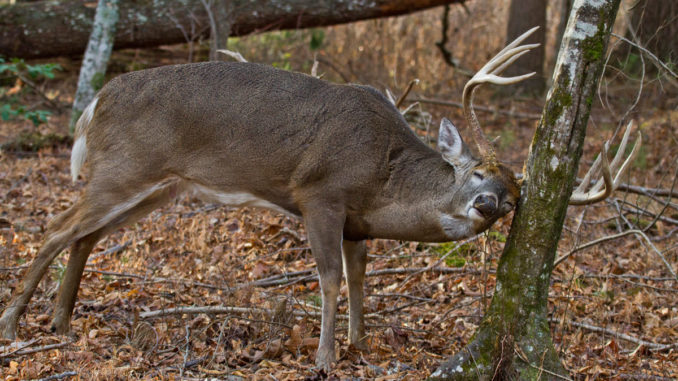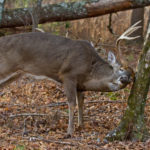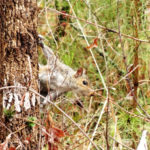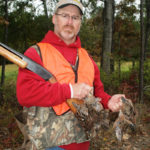
With more than a million acres in WMA program, finding good public hunting land close to home is not difficult
South Carolina hunters have a lot to be thankful for. First, with over 1.1 million acres of Wildlife Management Areas (WMAs), there’s lot of public land to hunt. Second, access is available to anyone with a WMA permit, and these public lands are scattered across the state; almost everyone is located within a reasonable drive of one or several WMAs. Finally these WMAs have a wide diversity of species that produce outstanding hunting for a diversity of species. From big game to small game to waterfowl and turkey, hunters can enjoy it all and be productive. Many also have the advantage of being managed in some form by the S.C. Department of Natural Resources.
But not all WMAs are created equal; some are better for specific species than others.
Here’s a look at some of the prime areas and species you can target on WMAs during the 2013-14 hunting season. All you need is a WMA permit, check the rules and regulations for specific guidelines for specific species on the targeted WMA — and go hunting!
DEER/TURKEY
According to Charles Ruth, deer and turkey project supervisor for the SCDNR, there are plenty of deer on most WMAs, and as he’s discovered in recent antler scoring sessions, some huge trophy bucks are being taken on public lands.
“The public-land hunting is very good for numbers of deer, bucks and does, as well as big bucks,” Ruth said. “In addition, especially on the larger areas, turkey hunting can be outstanding as well. But as always, those who are successful go to a bit of extra effort on WMAs. To be consistently successful, you need to get away from the crowds and get back into the areas where others simply won’t go the trouble to reach.
“One prime area I recommend for both deer and turkey is the national forest areas, which are comprised of three separate areas located in the Lowcountry, piedmont and mountains,” Ruth said. “But there are differences in hunting success rates.
“In the Mountain Hunt Unit in the Upstate, the data on deer harvested per square mile in the Sumter National Forest is not as high as found in the Central and Western Piedmont areas,” Ruth said. “However, that does not mean hunters cannot be successful here, and also I see some very positive intangible benefits from hunting the mountains. With appropriate effort, hunters can be successful. Plus, they have the opportunity to enjoy a type of hunting unlike any other place in the state. The mountain area can be rugged, but it offers a unique environment which can be a great pleasure to hunt.”
Ruth tabbed the Sumter National Forest in the piedmont as a prime place to hunt deer.
“The harvest per unit area in the Central Piedmont in 2012 was 14.4 deer per square mile, and in the Western Piedmont it was 12.1 deer per square mile,” Ruth said. “These numbers are outstanding and are comparable to what is considered very good hunting on private lands in other southeastern states and on surrounding private property in our state. Again, hunters will get out of it what they put into it, and with legwork and map study, success is a high probability. In the Mountain Hunt Unit, the harvest number is lower, at 4.3 deer per square mile, but there are still deer for the taking, and the area does offer some good turkey hunting.
Ruth also named the Crackerneck WMA and the Woodbury WMA as excellent deer hunting possibilities.
“In both areas, the opportunity to harvest hogs as well as deer is very good, so getting an opportunity to shoot is very good,” he said. “Plus, there are antler restrictions on these areas, and that will give public-land hunters a better opportunity to see larger bucks if that is their goal.”
In the Lowcountry, Ruth said there are lots of deer on numerous areas, but one huge area that is excellent for both deer and turkey.
“The Francis Marion National Forest is the obvious choice here,” Ruth said, “again, with the caveat that you need to do some leg work to determine the better areas with the Francis Marion area.”
Ruth said that throughout South Carolina, but perhaps especially in the lower portion of the state, much of the best WMA deer hunting is by draw hunt.
“I know we’re thinking about deer harvest in 2013 now, but some of the very best areas include the Webb Center, Hamilton Ridge, Donnelley, Bear Island, Bonneau Ferry and other WMAs are hunted via a draw-hunt process that takes place earlier in the year. I’d advise hunters to begin planning for those areas for next year since the applications are usually out by July each year. There are truly some amazing hunting opportunities available, and I recommend hunters go on the (SCDNR) website and get involved in the draw process for 2014.”
SMALL GAME
Biologist Billy Dukes as has been promoted to Assistant Chief of the Wildlife Section at SCDNR, but he’s still the state’s go-to guy for small-game information.
“There is just a tremendous amount of opportunity for hunting small game on WMAs in South Carolina,” Dukes said. “We have outstanding programs and great hunting for small game, including squirrel, rabbit, quail, dove and woodcock. However, it’s crucial to understand that not all WMA’ are created equal in terms of producing good hunting, and by that I am really referring to the proper habitat for each of the species.”
“We do have some WMAs that have enough upland and bottomland areas where multiple species may be found in good numbers,” Dukes said, “but just not in the same exact place.”
Dukes said that squirrels are super abundant, and it’s a species that can actually be classified as not being utilized enough.
“Hunting on WMA’s for this species can be great statewide,” he said. “The key here is to look for large river drainages and primary tributaries with large bottomlands. These are the ideal places for squirrels to be found in vast numbers. The reproductive nature of squirrels is such they can withstand a good bit of hunting pressure and maintain their numbers. Most areas can handle more squirrel hunting pressure.
“In terms of best places to hunt squirrels, the larger WMAs are always great, such as the Sumter National Forest and the Francis Marion National Forest,” Duke said. “In certain areas, they have huge bottomland areas with abundant squirrel populations, but squirrels can be found on other WMAs where you have good bottomland habitat on a smaller scale.”
Dukes said it’s important to note that reasonable numbers of squirrels can be found in isolated tracts of hardwoods, and if a hunter can find two or three such areas in close proximity, they can enjoy a successful hunt.
“Quail have a somewhat specific need in terms of habitat to thrive, and areas where you find open pine stands with low- growing understory and areas that are frequently managed with controlled burns are ideal,” Dukes said. “We do have quite a bit of these type areas on our WMAs, but they are certainly not found in every WMA. The key here is for the hunter to do their homework and check the sites using maps as just go scout it out.”
Dukes said several WMAs offer good quail hunting, include the Webb Center, Hamilton Ridge and Palachucola WMAs, all in Hampton County. He said the Crackerneck WMA, along with the Marsh WMA in Marion County and the Canal WMA in Berkeley County, are excellent.
“Also, some portions of the Francis Marion Forest can be outstanding,” he said. “Look for areas that are regularly burned as key areas. There is some surprisingly good quail hunting in this WMA in localized areas.”
Dukes said that woodcock is an often-overlooked resource for hunting on WMAs.
“It’s surprising to some I’m sure, but we do have some good hunting for woodcock on some of our WMAs,” Dukes said. “They do have very specific habitat requirements, but they are found in good numbers on both the Sumter National Forest and portions of the Francis Marion National Forest.”
Dukes said that unlike most other shorebirds and marsh birds, woodcock are a forest-dwelling species, often associated with forested wetlands. A brushy forest understory is the preferred habitat type, with swamp privet, holly, switch cane, honeysuckle, peppervine, trumpet creeper, greenbriar and grapes identified as important understory. Old fields, croplands, pasture lands, wet seeps and damp thickets also provide important habitat for woodcock.
According to Billy Dukes, SCDNR is managing 48 dove fields around South Carolina this fall, and all are managed for top- quality hunting.
“The vast majority of these prepared fields will offer good to exceptional dove hunting opportunities,” he said. “The (SCDNR) staff has an active hand in all of these fields, and we try to maximize the land for the dove resource. It is a very popular sport in our state.”
“I would recommend anyone just going on our website (www.dnr.sc.gov/wildlife/dove/pdf/dovefields20132014.pdf) and finding a site close to where they live,” said Duke, who points to specific data including dates and times of hunts on specific fields.
“The odds are good you’ll find excellent hunting,” Dukes said. “However, I can name a few in an all-inclusive summary that provide perhaps better than average hunting. In the Upstate the Draper tract in York County and the Thurmond Dove Field in Union Country are both excellent choices. In more of the mid-state area, the Crackerneck area in Aiken County and Pee Dee Station in Florence County are both very good. In the lower part of the state, the Donnelly WMA in Colleton County is excellent, and the Oak Lea Area in Clarendon County usually provides outstanding shooting. Also, the Canal Area in Berkeley County is an exceptional site.”
The first segment of South Carolina’s three-part dove season ends Oct. 5, but dove hunting will also be available Nov. 23-30 and Dec. 19-Jan. 15. Legal hunting hours are from 30 minutes before sunrise until sunset. The daily bag limit is 15 birds.
WATERFOWL
According to Dean Harrigal, SCDNR’s top waterfowl biologist, waterfowl hunting on WMAs is divided into Class I and Class II hunting units. Harrigal said the SCDNR website specifically lists these areas and their locations, as well as harvest information dating back several years to help with the planning process for hunters.
Harrigal said that the Category I areas encompass the WMAs that are subject to a draw hunt in October, with applications usually available by mid-September, so check now for applications.
“These waterfowl areas have the best habitat and provide the most-consistent waterfowl hunting,” he said. “They are the most-productive areas, and hunters are very likely to have a great hunt on any of these areas. If a hunter is drawn, it is a hunt in prime waterfowl habitat
Harrigal said that the Category II sites do not have a draw- hunt quota and are open to hunters on a first-come, first-served basis. He said these are still quality areas, and hunters can expect good hunting — but probably not as what would be found on the draw hunts.
“I’d say that 2012 was a good year for WMA waterfowl hunting,” Harrigal said. “Overall, the harvest rate was about two birds per gun. On the Category I areas, the actual harvest was 3.5 birds per gun, and on the Category II areas the harvest rate was 1.2 birds per gun.
“The prospects for 2013 are good, but weather dependant,” he said. “It’s good to know that continental populations of waterfowl are doing well,” he said. “But the key to waterfowl success here in South Carolina is weather dependant, specifically, the weather to the north and northwest being the biggest factors to us. But if the weather is favorable, we’ll likely have another excellent season.”
Regardless of the species you want to hunt, odds for good hunting are available for a variety of species on WMAs. Do your homework and research and you can enjoy excellent hunting on public lands this hunting season.







Be the first to comment